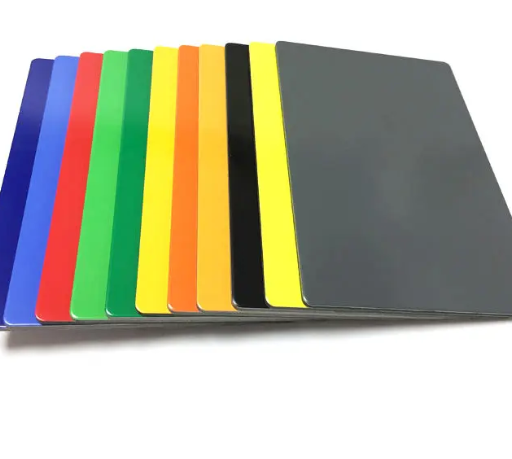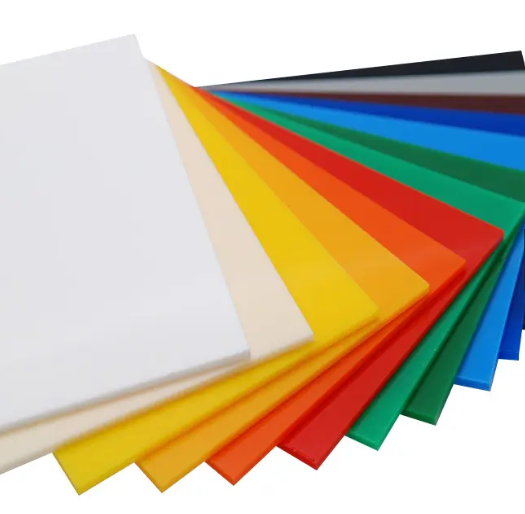Understanding Aluminum Composite Plates
Definition and Core Composition
Aluminum Composite Panels (ACPs) consist basically of two thin aluminum sheets sandwiching a central core made from different materials. What makes these panels special is how they combine looks with functionality all at once. Most cores today are either polyethylene based or filled with minerals, which helps keep buildings insulated while still keeping panel weight down. Manufacturers typically produce these panels through methods like roll forming or sheet extrusion processes that require quite specialized equipment. The beauty of ACPs lies in their versatility too – architects can choose from countless surface treatments and color options when designing everything from office buildings to shopping centers, making them extremely popular across construction sectors worldwide.
The Sandwich Structure Explained
ACP materials get their name from what looks like a sandwich when you cut them open. Basically, there's a light core material trapped between two layers of aluminum. What makes these panels so special is how strong they are despite being relatively light weight. Architects love working with them because buildings need something that won't bend easily under stress but still keeps things lightweight. The way these panels resist bending without breaking has made them popular choices for exterior walls on modern buildings. Plus, designers appreciate how flexible they are for creating different shapes and forms, something many material experts point out as a major plus in today's construction world where form follows function isn't just a saying anymore.
Key Advantages of Aluminum Composite Plates
Lightweight Nature Meets High Durability
Aluminum Composite Plates, or ACPs for short, weigh around half what steel does, which is pretty remarkable when compared to conventional building materials. Their light weight makes installation straightforward even on big construction sites where heavy materials can really slow things down. What's interesting though is how durable they actually are despite being so light. These plates stand up well against rain, sun damage, and rust over time. Most manufacturers back this up with decent warranty periods too. Take a look at any major building project nowadays and chances are good they're using ACP somewhere. The fact that these plates are both light and tough means less strain during installation and significantly reduced shipping expenses. Builders save money while still getting quality results that last.
Superior Strength-to-Weight Ratio
Aluminum Composite Plates have a much better strength-to-weight ratio compared to most traditional building materials. Take tensile strength for instance - ACPs actually perform better than regular aluminum and can rival certain grades of steel too. Because they're so strong relative to their weight, engineers can work with thinner sheets while still maintaining structural integrity. This matters a lot when constructing tall buildings or mobile structures where weight becomes a real concern. Many engineers now rely on this property to make smarter design choices, balancing stability with cost effectiveness. According to people who know the industry inside out, using ACPs has completely changed how architects and builders approach projects. They can create daring designs that would have been impossible before because material weight isn't such a limiting factor anymore. Getting these optimizations right remains absolutely essential in today's construction world where safety standards are strict and project budgets need to stay tight.
In summary, Aluminum Composite Plates offer outstanding advantages through their lightweight nature combined with high durability and superior strength-to-weight ratio, translating into practical solutions for modern construction challenges.
Aluminum Composite Plates in Signage
High-Printability for Advertising
Aluminum Composite Plates or ACPs have become really popular lately because they print so well on their smooth surfaces. That makes them great for all sorts of advertising and brand stuff. The fact that there's almost no grain in these plates means colors pop when printed, creating those eye catching ads we see everywhere. Some newer methods like UV cured printing take things even further. With this technique, the printed designs stay bright and don't fade away even after being out in the sun for months. Think about billboards along highways that still look fresh after years outside. For companies trying to grab attention in crowded markets, the clean look of ACPs just works better somehow. People notice them more easily and tend to remember what's displayed on those smooth panels.
Outdoor Durability in Harsh Conditions
Aluminum Composite Plates really stand out when we talk about signs that need to last outdoors, especially where conditions get tough. These plates can handle what Mother Nature throws at them extreme heat, cold, dampness, even pollution without breaking down over time. That kind of toughness matters a lot near the coastlines where salt air eats away at regular materials pretty quickly. What makes ACPs so appealing isn't just how they look but also how little work they require after installation. Most companies find themselves saving money in the long run because there's no constant repainting or replacing damaged sections like with other materials. Businesses looking for something that won't let them down year after year while keeping expenses under control should seriously consider going with ACPs for their outdoor displays.
Fabrication and Installation Benefits
Ease of Cutting and Roll-Forming
Aluminum Composite Plates (ACP) are pretty easy to work with because they're so light weight. They can be cut, bent, and shaped without much hassle at all. Architects love this when working on complicated building designs that need lots of flexibility. Most shops use CNC routers and laser cutters to handle the detailed cuts required for fancy patterns. What really stands out about ACPs though is how they let designers think outside the box. Traditional materials often limit what's possible, but ACP opens up new avenues for creative expression while still being structurally sound. That's why we see them popping up everywhere from shopping malls to high rise buildings where looks matter just as much as functionality does.
Cost-Effective Labor and Transport
Aluminum Composite Plates (ACPs) catch attention both for how they look and what they save money on when it comes to getting them from point A to B and putting them up. Weighing less than traditional materials means shipping costs drop quite a bit, something that matters a lot for big construction jobs covering several acres. Installation teams find them much easier to work with too. Contractors report needing about half the crew size compared to heavier alternatives, which cuts down on payroll expenses. Real world numbers tell the story best some companies have saved upwards of 30% just by switching to ACPs. The time saved during installation isn't trivial either. Since panels go up faster without special equipment, project managers can redirect funds toward better insulation or upgraded finishes instead of spending everything on labor. This makes ACPs an attractive option for developers watching their bottom line while still wanting quality results.

Sustainability and Performance
Recyclability and Eco-Friendly Design
Aluminum Composite Plates or ACPs have become popular because they recycle so well, which helps create a circular economy where materials keep getting used instead of ending up in landfills. What's great about these plates is that builders can take them apart and reuse them again and again without any loss in quality. This means less waste overall and fits right into green building standards most architects look for nowadays. The International Aluminum Institute actually reports that roughly three quarters of all aluminum made throughout history remains in circulation somewhere, showing just how effective recycling systems are for this material. Beyond simple recycling, manufacturers are adopting cleaner production techniques too. When companies source aluminum from factories certified as sustainable, it makes ACPs even more attractive for projects aiming at environmental responsibility. Construction firms across the country are starting to incorporate ACPs into their designs, cutting down on environmental damage while paving the way toward smarter resource usage in the long run.
Thermal and Acoustic Insulation Properties
Aluminum composite panels offer good thermal and acoustic insulation properties that boost building energy efficiency. When installed properly, these panels cut down on heat movement through walls and ceilings, so buildings need less energy for heating during winter months and air conditioning when it gets hot outside. This translates to real money saved on utility bills over time. Research indicates that ACP installations can reduce noise levels by around 30 decibels, creating much quieter indoor environments especially valuable in busy city centers where external noise pollution is a constant issue. Architects working on new projects find these characteristics increasingly appealing as local codes become stricter regarding energy usage requirements. Many designers incorporate ACPs into their blueprints simply because they help satisfy regulatory demands while still maintaining comfortable living conditions inside the structures. What makes ACP selection particularly attractive today is how well they balance visual aesthetics with practical benefits like improved energy management and better sound control throughout different parts of the building.
FAQ
What are Aluminum Composite Plates made of?
Aluminum Composite Plates (ACP) consist of two thin layers of aluminum that encase a non-aluminum core, often made of polyethylene or mineral-filled substances.
What are the main advantages of using ACPs?
ACPs are lightweight yet durable, offering superior strength-to-weight ratio, high resistance to weather elements, and cost-effectiveness in transport and installation.
How do ACPs enhance advertising and signage?
ACPs feature a high-printability and smooth surface suitable for vibrant and durable prints, making them ideal for advertising and branding, especially in outdoor conditions.
Are ACPs environmentally friendly?
Yes, ACPs are highly recyclable and can be used multiple times without quality loss. They support sustainable building practices with their eco-friendly design and recyclability.
Do ACPs provide any insulation properties?
ACPs offer excellent thermal and acoustic insulation, enhancing energy efficiency and noise reduction in buildings.

